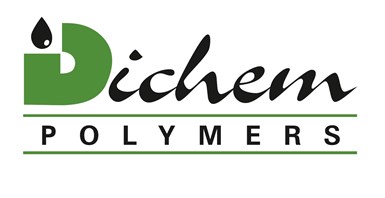Applied Graphene Materials signs distribution agreement with Dichem Polymers SA
Dichem Polymers will distribute AGM’s graphene dispersion products to the Greek coatings and polymers markets.

Applied Graphene Materials (AGM, Cleveland, U.K.) recently announced that it has signed a distribution agreement with Dichem Polymers SA (Acharnes, Greece) to extend the commercial reach of AGM’s graphene dispersion products to the Greek market.
Dichem Group delivers high-performance chemicals to a range of markets including polymers and coatings companies. AGM and Dichem have an exclusive agreement that will see the two companies collaborate on customer opportunities and introduce AGM’s proprietary Genable graphene dispersions technology to Greek companies. In addition to its own commercial hubs in the U.K. and the United States, AGM now has distribution agreements with local expert chemicals and coatings distributors in Greece, Italy, South Africa and Japan.
“… Having done the hard work of developing graphene dispersions as the primary route to utilization of nanoplatelet technology, we are pleased to be able to offer our standardized product offering to the global market through a strong distribution network across a growing number of countries,” says Adrian Potts, AGM CEO. “We are keen to see the development of revenue through this approach from the sale of both our easy-to-use Genable dispersions as well as customized product offerings to suit individual customer project requirements.”
“We are very pleased to have started a collaboration with AGM, a highly innovative organization, with a technology that we expect to have significant growth in the coatings industry in the coming years,” adds Demetrios Gkikas. Dichem Polymers CEO. “We believe that our long-standing relationships with local customers on one hand, and the high level of expertise of AGM on the other, will provide a clear benefit for those seeking a high-quality solution in certain sections of the paint industry.”
Related Content
-
The potential for thermoplastic composite nacelles
Collins Aerospace draws on global team, decades of experience to demonstrate large, curved AFP and welded structures for the next generation of aircraft.
-
Recycling end-of-life composite parts: New methods, markets
From infrastructure solutions to consumer products, Polish recycler Anmet and Netherlands-based researchers are developing new methods for repurposing wind turbine blades and other composite parts.
-
Plant tour: Teijin Carbon America Inc., Greenwood, S.C., U.S.
In 2018, Teijin broke ground on a facility that is reportedly the largest capacity carbon fiber line currently in existence. The line has been fully functional for nearly two years and has plenty of room for expansion.

.jpg;width=70;height=70;mode=crop)











